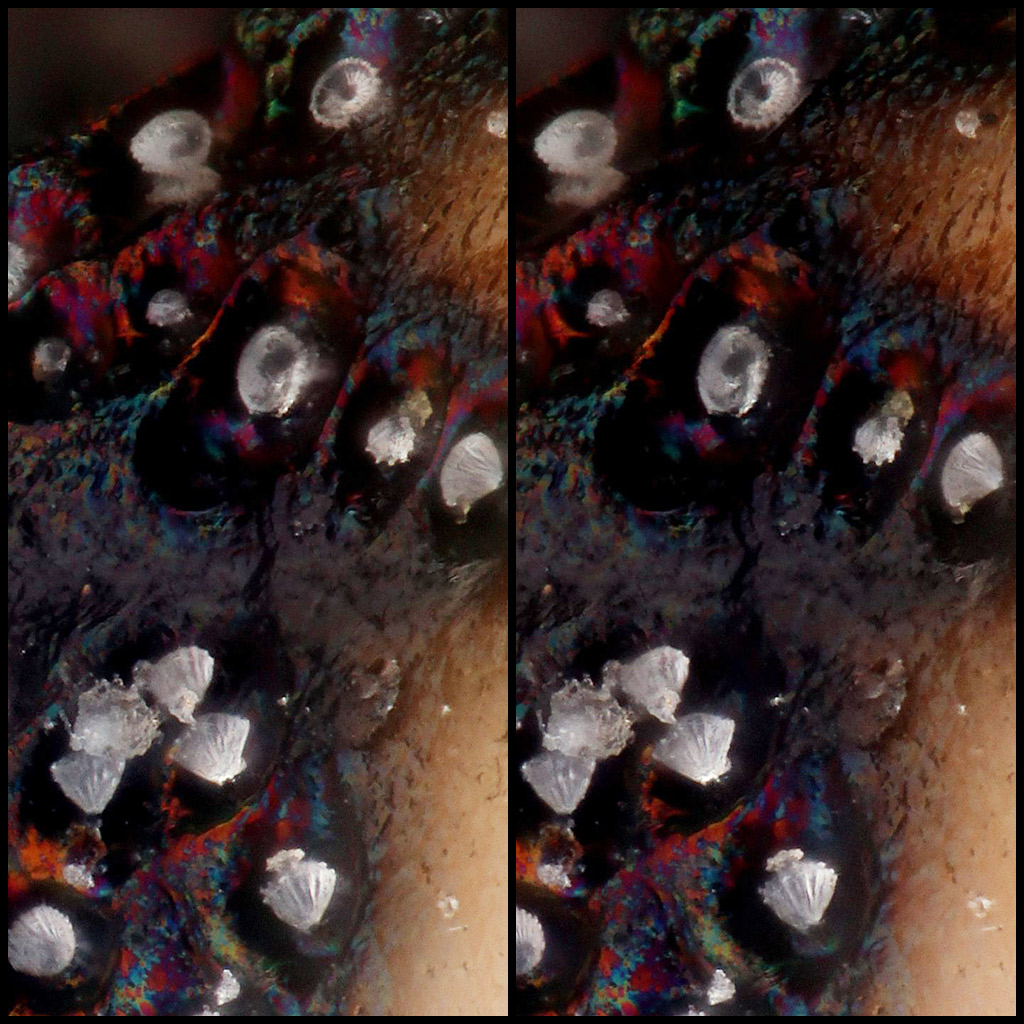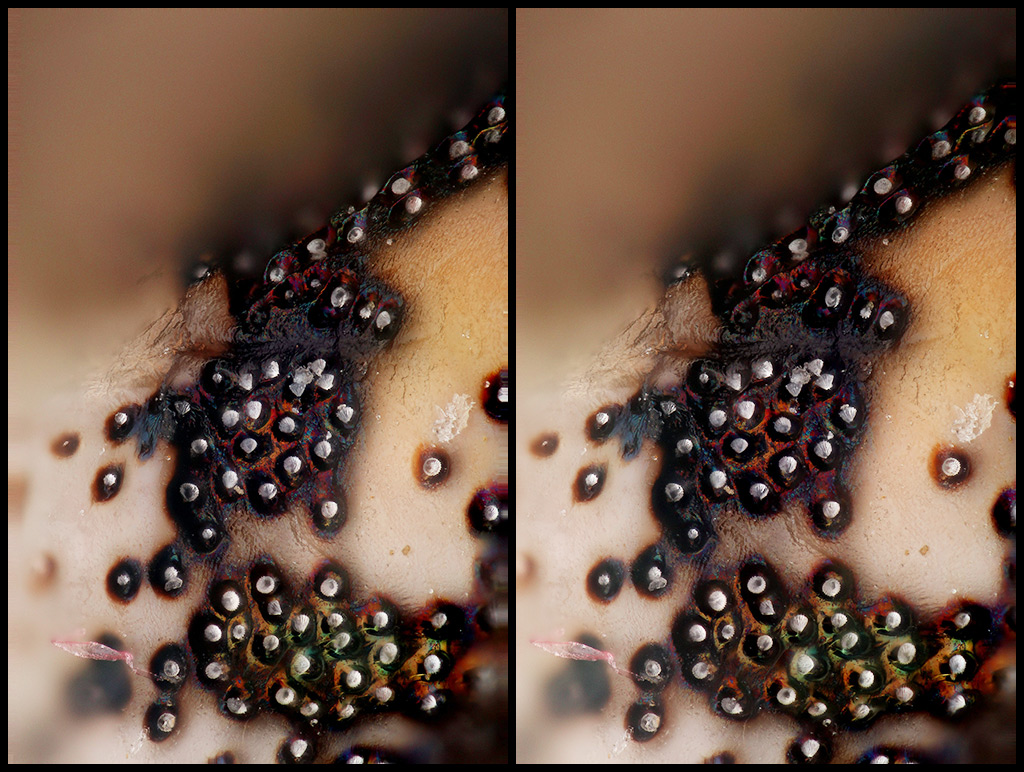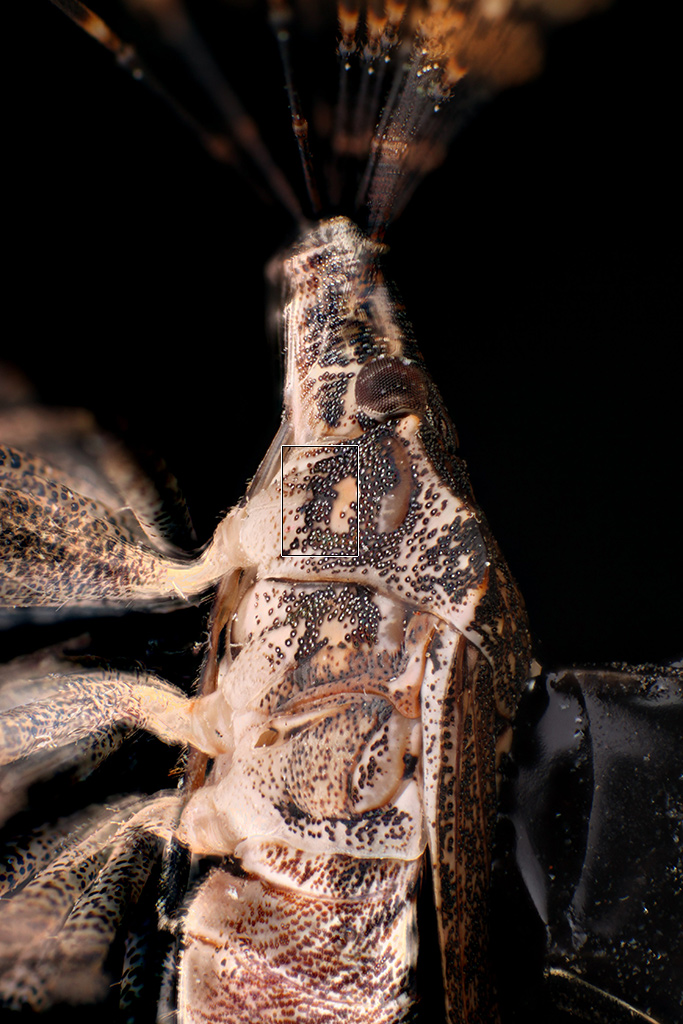Here I've repeated the exercise, with some modifications, to show similar structures on a live and active BMSB.
Stereo pair, crossed-eye.

The above is cropped to show the finest available detail of a wide variety of forms, including some fully inflated as seen from the side and from the top, some not inflated at all, and another couple that appear to be broken and lying open. One of those, at top of image, appears to be missing its membranous top altogether (or maybe it's just very transparent and reflecting nothing), so that we're looking straight down into the base of the structure. Unfortunately, all we can really see is that "It's very dark down there!" I'm guessing there's a pore, but that's impossible to tell for sure in this shot.
Note that this bug is pretty old and has been handled quite a bit. Comparing against the SEM images shown at https://www.photomacrography.net/forum/ ... 469#254469 , which show only fully expanded balloons, I'm guessing that their specimen was young and untouched.
Here's the entire frame, again as a stereo pair:

And finally, for context, here's a much wider stack of almost the whole bug. The outlined area is what's shown above. The black lump glued to the bug's back is a magnetic holding jig that I've documented in a separate thread, HERE.

Shot with Mitutoyo M Plan Apo 20X NA 0.42, 201 frames at 0.002 mm focus step, and with 2X NA 0.55, 42 frames at 0.100 mm focus step, both on Raynox DCR-150 tube lens to a Canon T1i camera. Dual flash diffused through copy paper. The bug was actually lying on its back with legs pointing upward and the diffuser above it. Rotated here to make the aspect ratios work out better for stereo. Stereo shift is +-5%, which gives about 10.2 degrees of stereo separation.
I hope you find this interesting!
--Rik
Edit: to add link for magnetic holding jig
